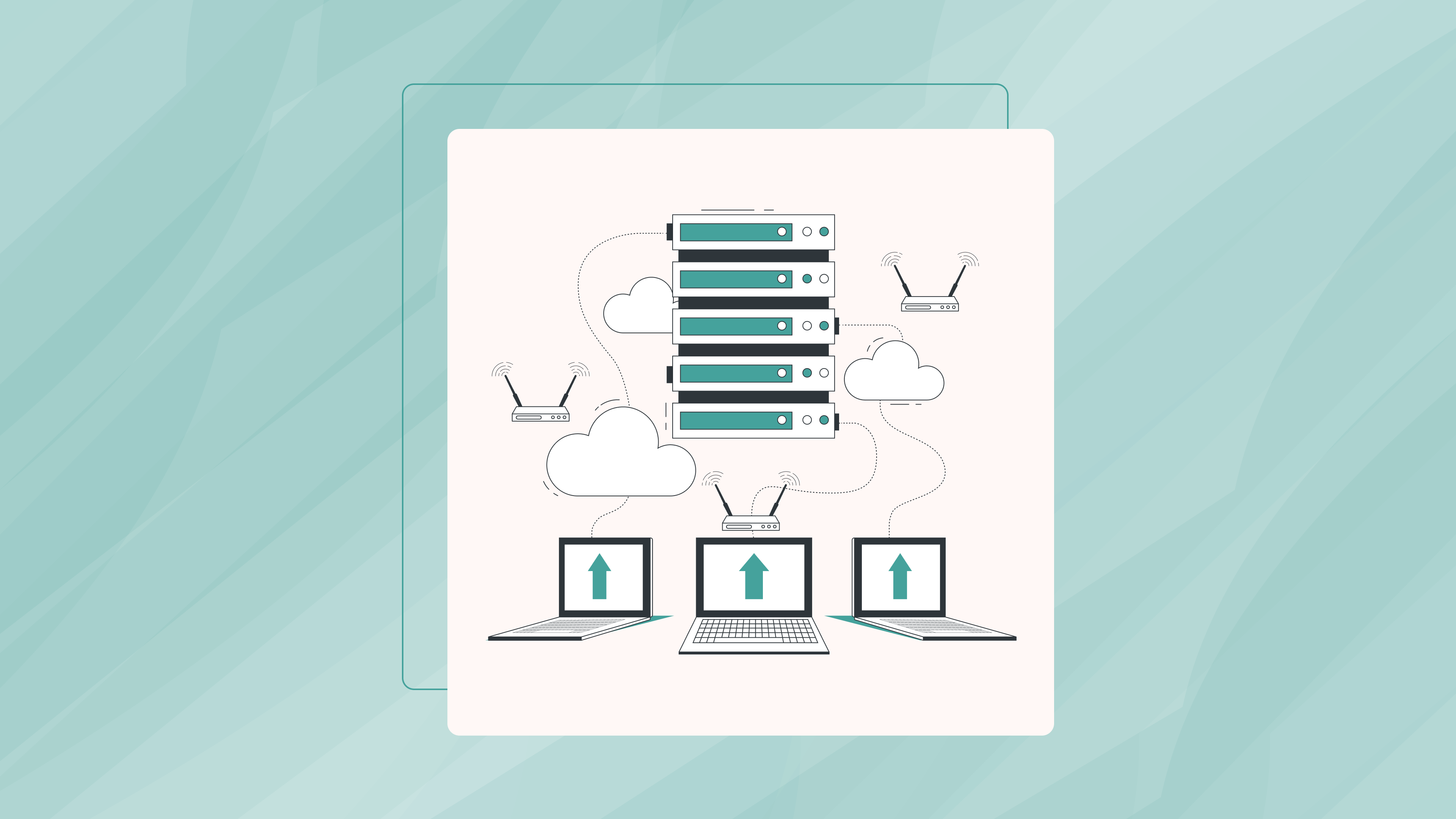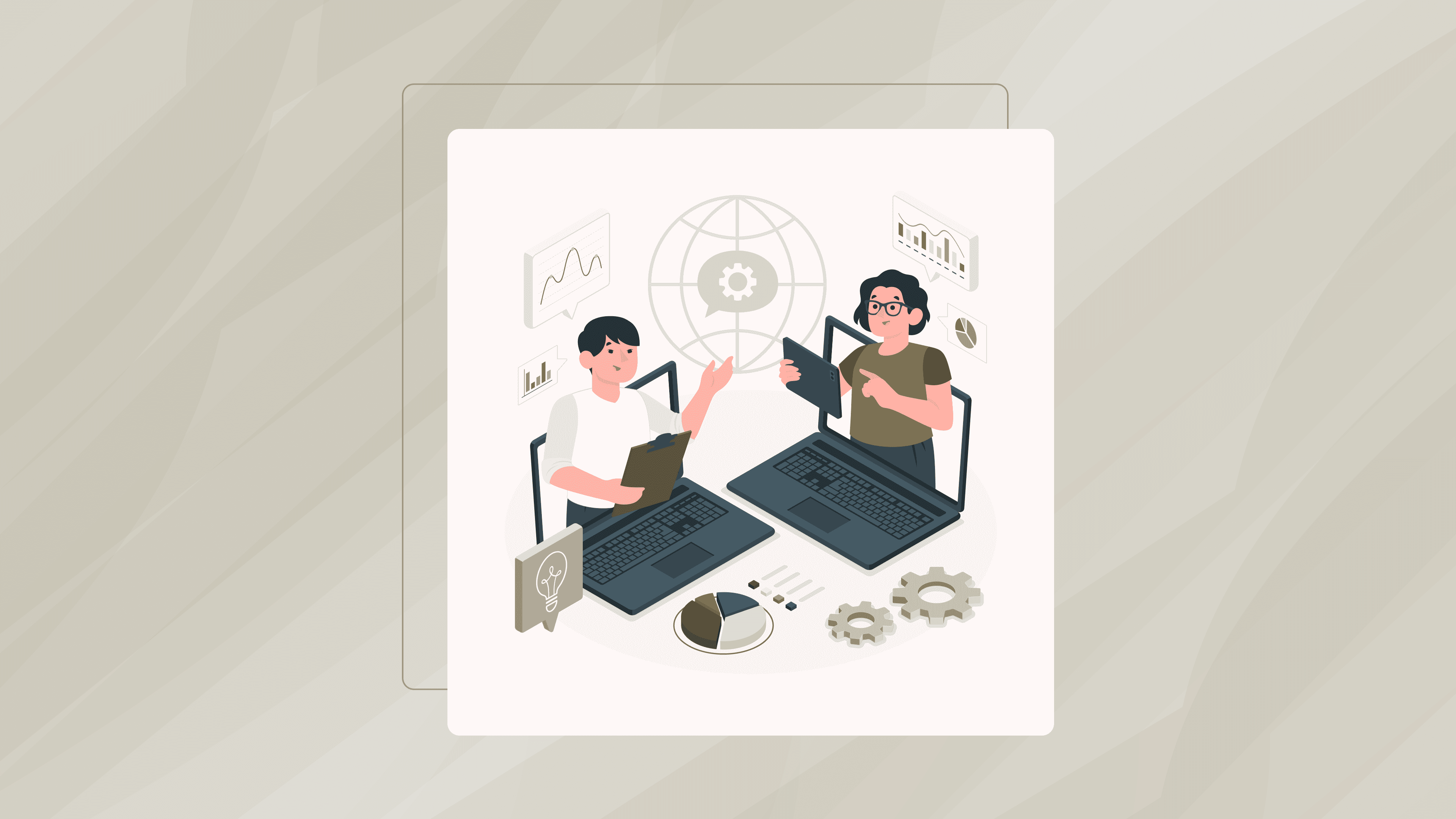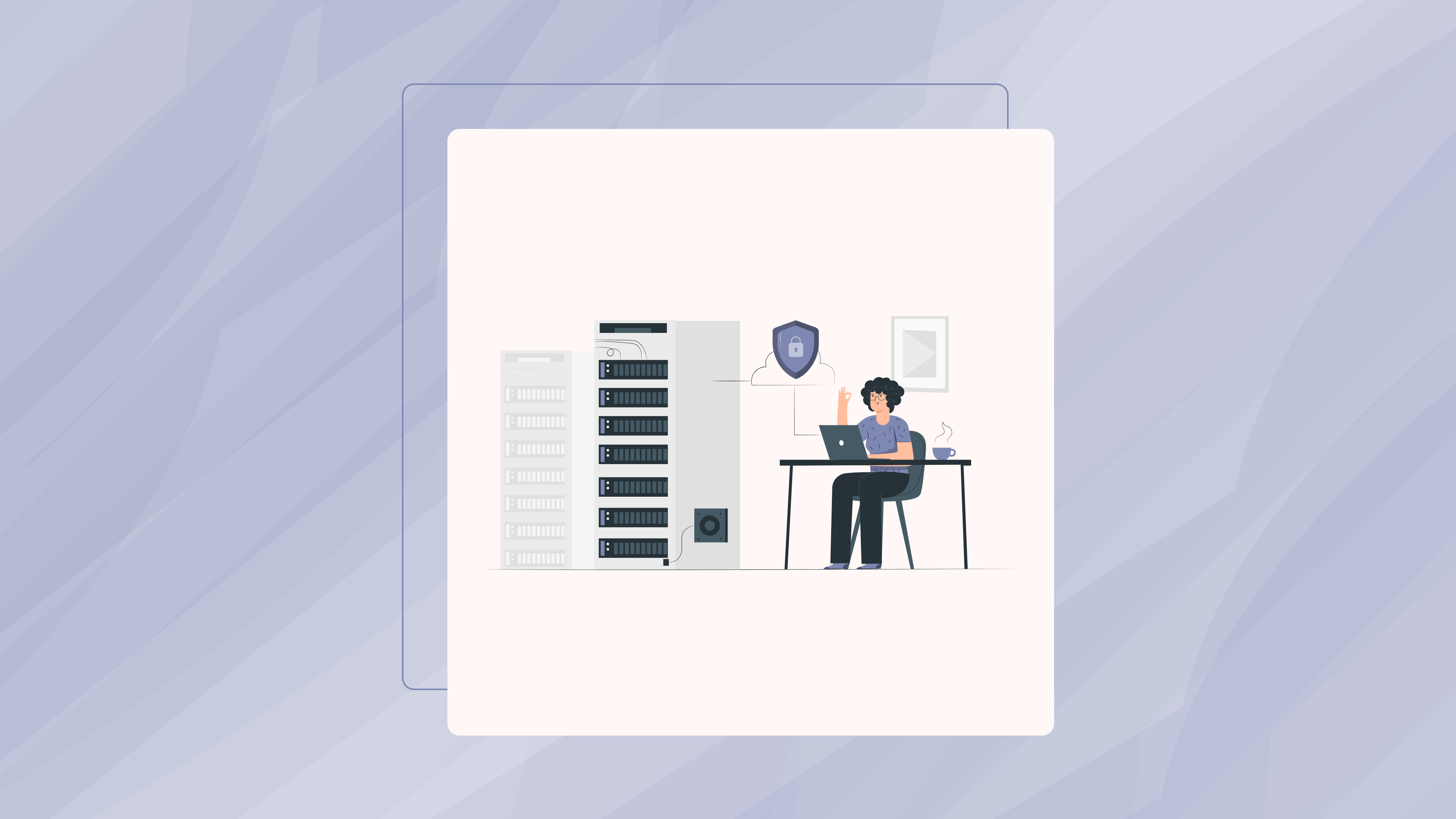Blockchain
Difference Between Centralized and Decentralized Systems
Nov 15, 2024




Systems across industries are structured as either centralized or decentralized. A centralized system consolidates authority and decision-making under one entity, while a decentralized system distributes these processes across multiple participants. These structures impact efficiency, transparency, scalability, and security, influencing their application in technology, finance, and governance. This blog explores the key differences between centralized and decentralized systems, their advantages, disadvantages, and real-world examples.
What is a Centralized System?
A centralized system is a structure where a single authority or organization controls the operations, data, and decision-making processes. All interactions and activities are governed and managed by this central point.
Examples: Traditional banking systems, social media platforms like Facebook, and corporate hierarchies.
What is a Decentralized System?
A decentralized system, on the other hand, distributes control, decision-making, and data management across multiple nodes or participants. There is no single controlling authority, and operations are managed collaboratively.
Examples: Blockchain networks like Bitcoin and peer-to-peer file-sharing systems like BitTorrent.
Key Differences Between Centralized and Decentralized Systems
Control
Centralized System: Control is concentrated under one authority
Decentralized System: Control is distributed among multiple nodes or entities.
Decision-Making
Centralized System: Decisions are made by a central authority in a top-down approach.
Decentralized System: Decisions are made collaboratively, often requiring consensus from multiple participants.
Data Storage
Centralized System: Data is stored in a single location, such as a central server or database.
Decentralized System: Data is distributed across multiple nodes in the network.
Transparency
Centralized System: Limited transparency, as only the central authority has full visibility of processes.
Decentralized System: High transparency, with participants often able to view all transactions or processes.
Security
Centralized System: Vulnerable to single points of failure and targeted attacks.
Decentralized System: Enhanced security due to redundancy; compromising the entire system is difficult.
Resilience
Centralized System: A failure in the central authority can disrupt the entire system.
Decentralized System: The system remains operational even if some nodes fail, offering greater resilience
Scalability
Centralized System: Easier to scale under a unified structure, as decisions and updates are centrally managed.
Decentralized System: Scaling can be challenging due to the need for coordination among multiple nodes.
Speed
Centralized System: Faster operations and decision-making due to fewer parties involved.
Decentralized System: Slower processes, as decisions require collaboration and consensus.
Accountability
Centralized System: Clear accountability, as one authority is responsible for actions and outcomes.
Decentralized System: Accountability can be unclear, as responsibility is shared among participants.
Maintenance
Centralized System: Easier to manage and maintain due to a singular control point.
Decentralized System: More complex to manage, requiring coordination across nodes. Advantages and Disadvantages of Centralized Systems
Advantages
Efficiency in decision-making.
Cost-effective and simpler to implement.
Clear accountability with a single governing authority.
Easier maintenance and system management.
Disadvantages
Vulnerable to single points of failure.
Security risks from centralized storage and authority.
Limited transparency for users.
Potential bottlenecks as the system scales.
Advantages and Disadvantages of Decentralized Systems
Advantages
Resilience to failures due to distributed architecture.
Enhanced transparency and trust among participants.
Reduced reliance on intermediaries.
Greater security through redundancy and distributed data storage.
Disadvantages
Slower decision-making due to consensus requirements.
Complex maintenance and management.
Challenges in scaling the network efficiently.
Accountability can become fragmented or unclear.
Applications of Centralized and Decentralized Systems
Centralized Systems:
Traditional banking (central banks).
Corporate structures (top-down management).
Social media platforms like Instagram and Facebook.
Cloud computing platforms like Google Drive.
Decentralized Systems:
Blockchain networks (Bitcoin, Ethereum).
Peer-to-peer file sharing (BitTorrent).
Decentralized finance (DeFi platforms).
Decentralized autonomous organizations (DAOs).
Which System is Right for Your Needs?
Choose Centralized Systems if:
You prioritize efficiency and clear accountability.
The system requires strict control and management.
Speed and scalability are critical.
Choose Decentralized Systems if:
You value transparency and trust.
Resilience to failures and enhanced security are important.
Collaboration and participation among many stakeholders are essential.
Conclusion
The choice between centralized and decentralized systems depends on the specific goals and needs of a project or organization. Centralized systems offer efficiency, simplicity, and clear accountability but are vulnerable to failures and attacks. Decentralized systems, on the other hand, provide security, transparency, and resilience, though they come with complexities in management and scalability. Understanding the differences between these systems can help individuals and businesses select the most suitable approach for their unique requirements. In a world that is increasingly embracing decentralization, blockchain and similar technologies are paving the way for more transparent and democratic systems across industries.
Systems across industries are structured as either centralized or decentralized. A centralized system consolidates authority and decision-making under one entity, while a decentralized system distributes these processes across multiple participants. These structures impact efficiency, transparency, scalability, and security, influencing their application in technology, finance, and governance. This blog explores the key differences between centralized and decentralized systems, their advantages, disadvantages, and real-world examples.
What is a Centralized System?
A centralized system is a structure where a single authority or organization controls the operations, data, and decision-making processes. All interactions and activities are governed and managed by this central point.
Examples: Traditional banking systems, social media platforms like Facebook, and corporate hierarchies.
What is a Decentralized System?
A decentralized system, on the other hand, distributes control, decision-making, and data management across multiple nodes or participants. There is no single controlling authority, and operations are managed collaboratively.
Examples: Blockchain networks like Bitcoin and peer-to-peer file-sharing systems like BitTorrent.
Key Differences Between Centralized and Decentralized Systems
Control
Centralized System: Control is concentrated under one authority
Decentralized System: Control is distributed among multiple nodes or entities.
Decision-Making
Centralized System: Decisions are made by a central authority in a top-down approach.
Decentralized System: Decisions are made collaboratively, often requiring consensus from multiple participants.
Data Storage
Centralized System: Data is stored in a single location, such as a central server or database.
Decentralized System: Data is distributed across multiple nodes in the network.
Transparency
Centralized System: Limited transparency, as only the central authority has full visibility of processes.
Decentralized System: High transparency, with participants often able to view all transactions or processes.
Security
Centralized System: Vulnerable to single points of failure and targeted attacks.
Decentralized System: Enhanced security due to redundancy; compromising the entire system is difficult.
Resilience
Centralized System: A failure in the central authority can disrupt the entire system.
Decentralized System: The system remains operational even if some nodes fail, offering greater resilience
Scalability
Centralized System: Easier to scale under a unified structure, as decisions and updates are centrally managed.
Decentralized System: Scaling can be challenging due to the need for coordination among multiple nodes.
Speed
Centralized System: Faster operations and decision-making due to fewer parties involved.
Decentralized System: Slower processes, as decisions require collaboration and consensus.
Accountability
Centralized System: Clear accountability, as one authority is responsible for actions and outcomes.
Decentralized System: Accountability can be unclear, as responsibility is shared among participants.
Maintenance
Centralized System: Easier to manage and maintain due to a singular control point.
Decentralized System: More complex to manage, requiring coordination across nodes. Advantages and Disadvantages of Centralized Systems
Advantages
Efficiency in decision-making.
Cost-effective and simpler to implement.
Clear accountability with a single governing authority.
Easier maintenance and system management.
Disadvantages
Vulnerable to single points of failure.
Security risks from centralized storage and authority.
Limited transparency for users.
Potential bottlenecks as the system scales.
Advantages and Disadvantages of Decentralized Systems
Advantages
Resilience to failures due to distributed architecture.
Enhanced transparency and trust among participants.
Reduced reliance on intermediaries.
Greater security through redundancy and distributed data storage.
Disadvantages
Slower decision-making due to consensus requirements.
Complex maintenance and management.
Challenges in scaling the network efficiently.
Accountability can become fragmented or unclear.
Applications of Centralized and Decentralized Systems
Centralized Systems:
Traditional banking (central banks).
Corporate structures (top-down management).
Social media platforms like Instagram and Facebook.
Cloud computing platforms like Google Drive.
Decentralized Systems:
Blockchain networks (Bitcoin, Ethereum).
Peer-to-peer file sharing (BitTorrent).
Decentralized finance (DeFi platforms).
Decentralized autonomous organizations (DAOs).
Which System is Right for Your Needs?
Choose Centralized Systems if:
You prioritize efficiency and clear accountability.
The system requires strict control and management.
Speed and scalability are critical.
Choose Decentralized Systems if:
You value transparency and trust.
Resilience to failures and enhanced security are important.
Collaboration and participation among many stakeholders are essential.
Conclusion
The choice between centralized and decentralized systems depends on the specific goals and needs of a project or organization. Centralized systems offer efficiency, simplicity, and clear accountability but are vulnerable to failures and attacks. Decentralized systems, on the other hand, provide security, transparency, and resilience, though they come with complexities in management and scalability. Understanding the differences between these systems can help individuals and businesses select the most suitable approach for their unique requirements. In a world that is increasingly embracing decentralization, blockchain and similar technologies are paving the way for more transparent and democratic systems across industries.
Systems across industries are structured as either centralized or decentralized. A centralized system consolidates authority and decision-making under one entity, while a decentralized system distributes these processes across multiple participants. These structures impact efficiency, transparency, scalability, and security, influencing their application in technology, finance, and governance. This blog explores the key differences between centralized and decentralized systems, their advantages, disadvantages, and real-world examples.
What is a Centralized System?
A centralized system is a structure where a single authority or organization controls the operations, data, and decision-making processes. All interactions and activities are governed and managed by this central point.
Examples: Traditional banking systems, social media platforms like Facebook, and corporate hierarchies.
What is a Decentralized System?
A decentralized system, on the other hand, distributes control, decision-making, and data management across multiple nodes or participants. There is no single controlling authority, and operations are managed collaboratively.
Examples: Blockchain networks like Bitcoin and peer-to-peer file-sharing systems like BitTorrent.
Key Differences Between Centralized and Decentralized Systems
Control
Centralized System: Control is concentrated under one authority
Decentralized System: Control is distributed among multiple nodes or entities.
Decision-Making
Centralized System: Decisions are made by a central authority in a top-down approach.
Decentralized System: Decisions are made collaboratively, often requiring consensus from multiple participants.
Data Storage
Centralized System: Data is stored in a single location, such as a central server or database.
Decentralized System: Data is distributed across multiple nodes in the network.
Transparency
Centralized System: Limited transparency, as only the central authority has full visibility of processes.
Decentralized System: High transparency, with participants often able to view all transactions or processes.
Security
Centralized System: Vulnerable to single points of failure and targeted attacks.
Decentralized System: Enhanced security due to redundancy; compromising the entire system is difficult.
Resilience
Centralized System: A failure in the central authority can disrupt the entire system.
Decentralized System: The system remains operational even if some nodes fail, offering greater resilience
Scalability
Centralized System: Easier to scale under a unified structure, as decisions and updates are centrally managed.
Decentralized System: Scaling can be challenging due to the need for coordination among multiple nodes.
Speed
Centralized System: Faster operations and decision-making due to fewer parties involved.
Decentralized System: Slower processes, as decisions require collaboration and consensus.
Accountability
Centralized System: Clear accountability, as one authority is responsible for actions and outcomes.
Decentralized System: Accountability can be unclear, as responsibility is shared among participants.
Maintenance
Centralized System: Easier to manage and maintain due to a singular control point.
Decentralized System: More complex to manage, requiring coordination across nodes. Advantages and Disadvantages of Centralized Systems
Advantages
Efficiency in decision-making.
Cost-effective and simpler to implement.
Clear accountability with a single governing authority.
Easier maintenance and system management.
Disadvantages
Vulnerable to single points of failure.
Security risks from centralized storage and authority.
Limited transparency for users.
Potential bottlenecks as the system scales.
Advantages and Disadvantages of Decentralized Systems
Advantages
Resilience to failures due to distributed architecture.
Enhanced transparency and trust among participants.
Reduced reliance on intermediaries.
Greater security through redundancy and distributed data storage.
Disadvantages
Slower decision-making due to consensus requirements.
Complex maintenance and management.
Challenges in scaling the network efficiently.
Accountability can become fragmented or unclear.
Applications of Centralized and Decentralized Systems
Centralized Systems:
Traditional banking (central banks).
Corporate structures (top-down management).
Social media platforms like Instagram and Facebook.
Cloud computing platforms like Google Drive.
Decentralized Systems:
Blockchain networks (Bitcoin, Ethereum).
Peer-to-peer file sharing (BitTorrent).
Decentralized finance (DeFi platforms).
Decentralized autonomous organizations (DAOs).
Which System is Right for Your Needs?
Choose Centralized Systems if:
You prioritize efficiency and clear accountability.
The system requires strict control and management.
Speed and scalability are critical.
Choose Decentralized Systems if:
You value transparency and trust.
Resilience to failures and enhanced security are important.
Collaboration and participation among many stakeholders are essential.
Conclusion
The choice between centralized and decentralized systems depends on the specific goals and needs of a project or organization. Centralized systems offer efficiency, simplicity, and clear accountability but are vulnerable to failures and attacks. Decentralized systems, on the other hand, provide security, transparency, and resilience, though they come with complexities in management and scalability. Understanding the differences between these systems can help individuals and businesses select the most suitable approach for their unique requirements. In a world that is increasingly embracing decentralization, blockchain and similar technologies are paving the way for more transparent and democratic systems across industries.
Schedule your Free Demo
Empower Your Organization’s Growth with the Future of Blockchain Technology
Book a Demo
Latest Blogs
Latest Blogs
Latest Blogs


How Is Blockchain Dominating The Education Sector?
Jan 18, 2025


what is immutable ledger in blockchain?
Jan 18, 2025


what makes blockchain technology secure?
Jan 18, 2025
